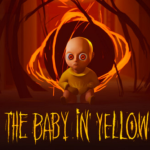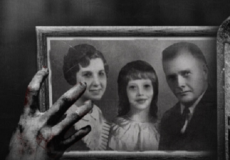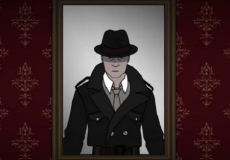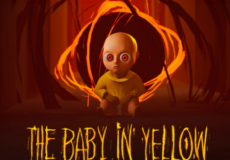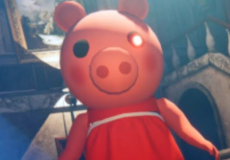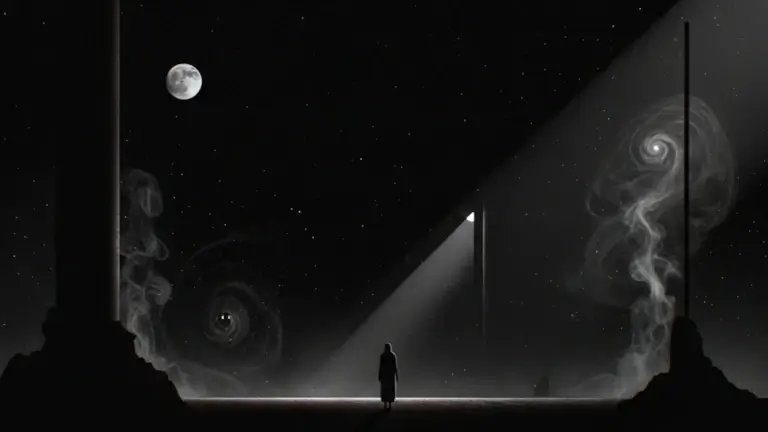

Best Games
Favourite Games
Who’s at the Door?

Who’s at the Door is a short, first-person game that places players in a looping, isolated setting with limited context. You awaken in a sparse room. Outside, someone—or something—knocks on the door. You don’t know what they want. You don’t know if they’re real. The world inside the house remains still, but your perception of it slowly begins to change. What begins as quiet repetition develops into something more psychological, more personal. The game doesn’t offer goals in the traditional sense. Instead, it builds a question: what happens when you answer?
As the days repeat, the furniture might shift slightly, a light might flicker, or a visitor might say something they shouldn’t know. Every event hints at instability. There’s no escape route, no weapons, no puzzles in the usual sense—just an opportunity to observe, choose, and experience the results. The player becomes both participant and observer, never sure whether they’re inside a story or inside a mind.
Small Actions With Lasting Effects
Every loop gives you several small choices. None seem important at first, but they carry weight as you replay the experience. The pills left at your door might calm things down, or they might open you up to something worse. Ignoring a knock may feel safe, but it could delay an answer you’re meant to find. Trust is never guaranteed. Even the environment itself seems unsure of what it’s doing, and you’re left to work through it alone.
Key actions the game may ask of you:
- Choose to open or ignore the door
- Take medication with unknown side effects
- Inspect subtle changes in your surroundings
- Follow or resist voices from outside
- Piece together your role through repeated patterns
Every new playthrough makes you second-guess earlier choices. Was the voice behind the door always like that? Has that object always been in the room? Did the tone of that message just shift? These questions fuel the tension, and the answers always feel just out of reach.
A Place That Watches Back
The single-room setting begins to feel alive—not in a supernatural sense, but in the way it reflects you. Repeating loops lead you to anticipate moments before they happen, but the game plays with those expectations. The story unfolds through disorientation, suggestion, and absence. Silence becomes one of its tools, and so do the tiniest details—a different painting, a new voice line, a longer pause before the knock.
Players often find themselves creating theories to make sense of the narrative:
- The character is reliving trauma from a past event
- The visitor is symbolic—a memory, a fear, or even the self
- The pills are an attempt to control reality, or suppress it
- The entire loop is a therapeutic exercise gone wrong
- The room is not a prison, but a choice the character keeps making
These interpretations are never confirmed, but they guide how the player responds. The ambiguity isn’t a flaw—it’s a design choice. Who’s at the Door is less about explanation and more about reaction.
Built for Reflection, Not Resolution
The short length of the game invites multiple sessions. Each ending provides a slightly different conclusion, none of them offering full clarity. Rather than aiming for one true path, the game allows your decisions to carve different emotional routes. Did you act out of fear or curiosity? Did you want to uncover the truth, or did you avoid it? Each result reveals more about your mindset than the game’s.
Types of endings you might unlock:
- Submission: following instructions blindly
- Resistance: refusing to engage with the unknown
- Curiosity: taking every risk in search of meaning
- Denial: accepting safety over truth
- Closure: a fragile sense of understanding, even if incomplete
Each of these outcomes is brief, but they echo throughout future plays. You begin to wonder if there is a right way to move forward—or if forward even exists in this space.
The Door Never Truly Closes
Who’s at the Door is designed not to be solved, but to be felt. The game creates an experience that stays with players long after the final screen fades. Its atmosphere, its choices, and its refusal to clarify make it something closer to a quiet internal drama than a traditional horror story. You are not asked to survive, only to decide. And what you decide reveals more than you might expect.
In the end, the door is not just a physical object. It’s a point of contact between player and game, thought and fear, action and silence. Each knock is a reminder that something waits—and maybe it’s something you already know.
Play Who’s at the Door Unblocked
Who’s at the Door Unblocked is a browser-based version of the original psychological game that you can access freely, even on school networks. With no need to download or install anything, it gives players the chance to dive into a strange and looping experience directly from a classroom computer or school Chromebook. The game keeps its core concept intact—mysterious knocking, a quiet room, and choices that twist the story over time—but in a format that’s easy to start anytime.
This version is perfect for students looking for a short, story-driven game that doesn’t rely on fast reflexes or loud action. Its simple design and low system requirements mean it runs smoothly in most school environments. Since it’s unblocked, you won’t run into the usual restrictions that prevent access to many games at school. Whether during a free period, lunch break, or just a quiet moment, Who’s at the Door Unblocked offers a unique way to step into a different mindset and explore a haunting mystery—without leaving your desk.
FAQ
What is the main objective of the game?
The game focuses on observing your surroundings and making choices that shape the story. There is no fixed goal; understanding the situation is part of the experience.
How long does it take to complete a playthrough?
One session usually lasts under an hour. However, replaying the game reveals new content and endings.
Do the choices I make affect the outcome?
Yes, every decision influences what happens in future loops. The endings change depending on how you interact with the door, pills, and visitors.
Is this game considered horror?
It contains psychological horror elements, but there are no jumpscares or monsters. The fear comes from tension, isolation, and uncertainty.
Can the story be fully understood in one playthrough?
No, each loop reveals different pieces of the story. Multiple playthroughs are needed to uncover all possibilities and theories.
Discuss Who’s at the Door?







